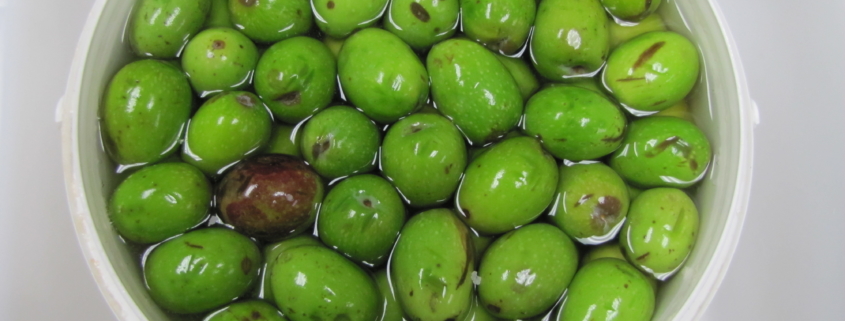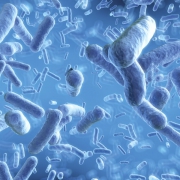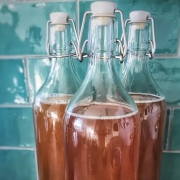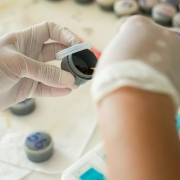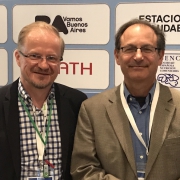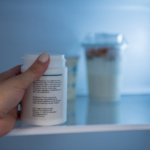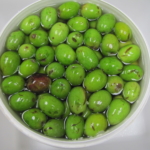Growing interest in beneficial microbes and fermented foods in Argentina
By Prof. Gabriel Vinderola PhD, Associate Professor of Microbiology at the Faculty of Chemical Engineering from the National University of Litoral and Principal Researcher from CONICET at Dairy Products Institute (CONICET-UNL), Santa Fe, Argentina
Awareness of gut microbes, fermented foods and probiotics has been on the rise in Argentina. Nutritionists and influencers, who in recent years have begun promoting a healthier lifestyle, are leveraging their social networks to post how-to instructions for making fermented foods, advice to promote a ‘healthier’ microbiota, and information on the potential role of probiotics and prebiotics in human health. But are these news items and recommendations based on science? Not always! I’ve been fortunate to have had the opportunity to make sure the science is correctly communicated to a broad audience on the microbiome, fermented foods, probiotics and prebiotics.
In Argentina, for the last 50 years, there has been on the air a TV show with a particular format: the hostess, Miss Mirtha Legrand, invites 4-6 people to have lunch every Sunday, talking about politics, economy, popular culture, arts and even science for 3 hours. According to her, this is the longest continuously running TV program in the world. Every Sunday several thousands of people from Argentina, Uruguay and Paraguay tune in. In October 2019, I was invited to join the table and to comment about the invisible world inside and around us. We discussed how we can profit from bacteria through fermented foods and probiotics, and how to feed our gut microbes with prebiotics. In fact, in 2019, I gave more than 40 talks on this topic to scientific audiences at conferences, as courses for Ph.D. students, as seminars and as workshops. These efforts are targeted not only to local scientists and students, but also to children in schools, local sport clubs in small towns, gyms and hospitals. The interest in friendly bugs is wide-ranging and varied, and fueled by information from radio and TV programs.

“Having lunch with Mirtha Legrand”, a talk show on television for more than 50 years in Argentina, where the discussion on beneficial microbes was brought to the table by Prof. Gabriel Vinderola (far right). Mirtha Legrand, now 93 years old, is in the center (October 3rd, 2019).
The enthusiasm of the audience was immediately evident. Lots of messages came by email, WhatsApp, Facebook or Instagram. People were anxious to know more, inquiring about trustworthy sources to read scientific-based but “easy-to-understand” material, posing specific questions about their gut feelings, where to get these probiotics and prebiotics or how to make fermented foods in a safe manner. Fortunately, the ISAPP infographics on probiotics and prebiotics were already available in Spanish, translated by Miguel Gueimonde (Spain) and me, and these were a welcome resource. Yet people still wanted more information, and asked more and more specific questions.
Spurred by such widespread interest, I contacted a local lawyer-turned-chef, Ana Milena Giacomini, who left behind her professional law career to open a small restaurant with a menu heavily based on fermented foods. She features such delights as home-made yoghurt, chucrut, kimchi, sugary kefir, fermented hummus, sourdough bread, pancakes made out of fermented rice flour, kombucha, kvass and a gasified drink from fermented ginger. With her, we organized 4-hour workshops, which are currently on hold due to COVID-19. These workshops feature Ana preparing some of these fermented foods live, followed by tasting, while I explain the science and microbiology behind them. I share factors related to the identity, safety, stability, and potential health effects of these products. I emphasize the differences between fermented foods and probiotics, while discussing the potential value of incorporating fermented foods, probiotics and prebiotics to the daily diet as a way to promote gut health. I provide more specific information on health effects for which robust meta-analyses are available to support the microbes’ use, such as prevention of antibiotic-associated diarrhea in children, treatment of infant colic, prevention of allergies, and downregulation of intestinal inflammation. Other workshops with different chefs from different locations in Argentina are in line for when the coronavirus pandemic ends.
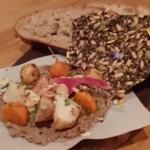
Part of the four-course dinner containing fermented foods prepared by chef Martin Russo. The starter consisted of fermented carrots and hummus, served on sourdough bread (pictured).
These workshops are expected to be attended by 30-35 people each time. Nutritionists are interested in giving sound responses to their clients, who hear about these topics in the media or in social networks. But also, people come who want to learn how to make fermented foods, where to find probiotics and prebiotics, or to gain clear guidance on how to incorporate live bacteria to their diets. Other health professionals (gastroenterologists, pediatricians), educators and even people from the industry also attend.

The dessert was ice cream balls covered by the mother of vinegar (transparent circle on the top), rinsed and sweetened.
Most people interested in attending these workshops have narrow experience with fermented foods, only being familiar with such things as yoghurt, cheese, wine or beer. Some of them do not know that these foods are indeed fermented, or do not have a clear idea what fermentation is about. Most of them also have a very limited awareness, or even misinformation, about probiotics and prebiotics. These workshops offer the possibility for the curious to learn and to taste new foods, to get insights on the science behind fermented foods, probiotics and prebiotics, and to learn the differences between them in a science-based manner in an “easy-to-follow language”. These encounters are a great way to expand the interest by the general public on the invisible world inside and around us.

